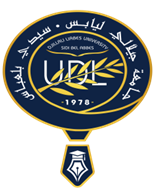- [ VRPG-Doc] Génie mécanique --- هندسة ميكانيكية
Permanent URI for this collection
Browse
Browsing - [ VRPG-Doc] Génie mécanique --- هندسة ميكانيكية by Author "BOUDJEMAA Ismail"
Now showing 1 - 1 of 1
Results Per Page
Sort Options
- ItemEtude du transfert de charge à l'interface moignon / prothèse(2022-09-07) BOUDJEMAA Ismail; Encadreur: SAHLI Abderahmaneالملخص(بالعربية): بعد بتر الطرف السفلي، يحتاج المريض الى طرف اصطناعي يمَكِنه من استعادة بعض وظائف الطرف المبتور. لسوء الحظ، فإن العديد من مستخدمي الأطراف الاصطناعية غير راضين عن أدائها. السبب الرئيسي الذي يجعل المرضى يشعرون بعدم الارتياح بعد استخدام الطرف الاصطناعي يرجع إلى ضغوطات التلامس و اجهادات القص المرتفعة بين الطرف المتبقي والطرف الاصطناعي. في هذه الدراسة ، استخدمنا طريقة العناصر المنتهية لمحاكاة تطبيق وزن المريض على الطرف الاصطناعي. سمح لنا ذلك بتجربة العديد من المقترحات التي من شأنها تقليل الاجهادات في الواجهة بين الطرف المتبقي و الطرف الاصطناعي . في هذه الدراسة ، تم التركيز على طريقتين رئيسيتين لتقليل الاجهادات بين الطرف المتبقي و الطرف الاصطناعي . كانت الطريقة الأولى هي تصميم بطانة صناعية متعددة الطبقات بأبعاد تتوافق تماما مع شكل الطرف المتبقي ؛ أيضًا ، باستخدام طريقة العناصر المحدودة ، حاولنا تحديد أنسب المواد للمريض ، والتي تم تضمينها في تركيبة هذه البطانة. الطريقة الثانية هي زرع غرسة طرية أسفل عظم الفخذ المبتور. من خلال التحليل باستخدام طريقة العناصر المحدودة ، تمكنا من معرفة تأثير صلابة هذه الغرسة على الاجهادات في الواجهة بين الطرف المتبقي و الطرف الاصطناعي . كلتا الطريقتين كانت فعالة في خفض قيم ضغوط التلامس واجهادات القص في الواجة بين العضوالمتبقى والطرف الاصطناعي. Résumé (Français) : Après l'amputation d'un membre inférieur, le patient a besoin d'un membre prothétique qui peut restaurer certaines des fonctions du membre amputé. Malheureusement, de nombreux utilisateurs de prothèses ne sont pas satisfaits de ses performances. La principale raison pour laquelle les patients se sentent mal à l'aise après l'utilisation d'une prothèse est à cause des pressions et des contraintes de cisaillement qui se produisent à l'interface moignon-prothèse. Dans cette étude, nous avons utilisé la méthode des éléments finis pour simuler l'application du poids d'un patient à une prothèse. Cela nous a permis d’étudier plusieurs propositions qui réduiraient les contraintes à l'interface moignon-prothèse. Dans cette étude, deux méthodes principales ont été privilégiées afin de réduire les contraintes à l'interface moignon-prothèse. La première méthode consistait à concevoir un manchon prothétique multicouche dont les dimensions correspondent à la forme du membre résiduel ; aussi, par la méthode des éléments finis, nous avons essayé de déterminer les matériaux les plus adaptés au patient, qui entrent dans la composition de ce manchon. La deuxième méthode était l'implantation simulée d'un implant mou sous le fémur amputé. Grâce à cette analyse avec la méthode des éléments finis, nous avons pu connaître l'effet de la rigidité de cet implant sur les contraintes à l'interface moignon-prothèse. Les deux méthodes ont été efficaces pour réduire les valeurs des pressions de contact et des contraintes de cisaillement à l'interface moignon-prothèse. Résumé (Anglais): After lower limb amputation, the patient needs a prosthetic limb that can restore some of the functions of the amputated limb. Unfortunately, many prosthetic users are not satisfied with its performance. The main reason patients feel uncomfortable after using prosthesis is due to the contact pressures and shear stresses that occur at stump-prosthesis interface. In this study, we employed the finite element method to simulate the application of a patient's weight to a prosthetic. This allowed us to experiment with several proposals that would reduce the stresses at the stump-prosthesis interface. In this study, two main methods have been focused on in order to reduce the interfacial stresses the stump-prosthesis interface. The first method was to design a multi-layer prosthetic liner with dimensions corresponding to the shape of the residual limb; also, using the finite element method, we tried to determine the most suitable materials for the patient, which are included in the composition of this liner. The second method was simulated implantation of a soft implant below the amputated femur. Through this analysis using the finite element method, we were able to know the effect of the stiffness of this implant on the stresses at the stump-prosthesis interface. Both methods were effective in reducing the values of contact stresses and shear stresses at the stump-prosthesis interface.
